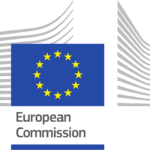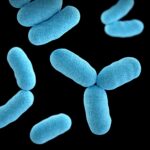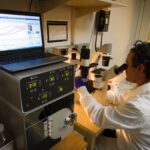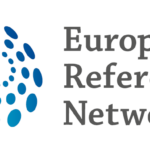 The Information Center for Rare Diseases and Orphan Drugs (ICRDOD) is conducting a survey on the impact of COVID-19 on rare disease patients and their families in Bulgaria. The survey aims to examine the experiences and difficulties of patients with rare diseases and their families, related to COVID-19 and the medico-social situation in our country. It contains 11 questions and takes no more than 15 minutes to complete. The survey is anonymous and the answers will be used only for the purposes of this survey. If you would like to participate in our survey you can fill it out here.
The Information Center for Rare Diseases and Orphan Drugs (ICRDOD) is conducting a survey on the impact of COVID-19 on rare disease patients and their families in Bulgaria. The survey aims to examine the experiences and difficulties of patients with rare diseases and their families, related to COVID-19 and the medico-social situation in our country. It contains 11 questions and takes no more than 15 minutes to complete. The survey is anonymous and the answers will be used only for the purposes of this survey. If you would like to participate in our survey you can fill it out here.
Publications
 On 24 March, the European Commission launched the “COVID-19 Clinical Management Support System” with the aim to support clinicians in hospitals that are currently facing the coronavirus emergency all over Europe. Based on the experience with the European Reference Networks, the initiative will help to create rapid connections across Europe among the hospitals indicated by the Member States as reference centres for COVID-19. Clinicians can rely on a dedicated helpdesk managed by DG SANTE to set up web conferences and exchange with their peers in Europe on possible treatments, and on how to handle severe and complex cases. This synergy aims to speed up the adoption of specific treatment options and help reduce some of the uncertainties due to the unknown aspects of the virus. Ultimately, it is in the vital interest of the patients infected with COVID-19 that their doctors can discuss their cases, and get the best advice possible. For more information click here.
On 24 March, the European Commission launched the “COVID-19 Clinical Management Support System” with the aim to support clinicians in hospitals that are currently facing the coronavirus emergency all over Europe. Based on the experience with the European Reference Networks, the initiative will help to create rapid connections across Europe among the hospitals indicated by the Member States as reference centres for COVID-19. Clinicians can rely on a dedicated helpdesk managed by DG SANTE to set up web conferences and exchange with their peers in Europe on possible treatments, and on how to handle severe and complex cases. This synergy aims to speed up the adoption of specific treatment options and help reduce some of the uncertainties due to the unknown aspects of the virus. Ultimately, it is in the vital interest of the patients infected with COVID-19 that their doctors can discuss their cases, and get the best advice possible. For more information click here.
 Regulators, scientists, clinicians and patient advocacy groups often cite ~7,000 as the number of rare diseases, or between 5,000 and 8,000 depending on the source. Why do estimates of the number of rare diseases vary so widely? One reason is the aforementioned lack of consistency in defining discrete disease entities and their incidence in different countries or demographics. Another reason is computational differences and imperfections in the current terminologies. Some terminologies do not include chromosomal disorders, or other structural variations such as inversions, while others do not include rare diseases with environmental causes, such as toxin exposure. For more information click here.
Regulators, scientists, clinicians and patient advocacy groups often cite ~7,000 as the number of rare diseases, or between 5,000 and 8,000 depending on the source. Why do estimates of the number of rare diseases vary so widely? One reason is the aforementioned lack of consistency in defining discrete disease entities and their incidence in different countries or demographics. Another reason is computational differences and imperfections in the current terminologies. Some terminologies do not include chromosomal disorders, or other structural variations such as inversions, while others do not include rare diseases with environmental causes, such as toxin exposure. For more information click here.
 X‑linked hypophosphatemic rickets (XLH, OMIM #307800) is a rare genetic metabolic disorder caused by dysregulation of fibroblast-like growth factor 23 (FGF23) leading to profound reduction in renal phosphate reabsorption. Impaired growth, severe rickets and complex skeletal deformities are direct consequences of hypophosphatemia representing major symptoms of XLH during childhood. In adults, secondary complications including early development of osteoarthritis substantially impair quality of life and cause significant clinical burden. With the global approval of the monoclonal FGF23 antibody burosumab, a targeted treatment with promising results in phase III studies is available for children with XLH. Nevertheless, complete phenotypic rescue is rarely achieved and remaining multisystemic symptoms demand multidisciplinary specialist care. Coordination of patient management within the major medical disciplines is a mainstay to optimize treatment and reduce disease burden. This review aims to depict different perspectives in XLH patient care in the setting of a multidisciplinary centre of expertise for rare bone diseases. For more information click here.
X‑linked hypophosphatemic rickets (XLH, OMIM #307800) is a rare genetic metabolic disorder caused by dysregulation of fibroblast-like growth factor 23 (FGF23) leading to profound reduction in renal phosphate reabsorption. Impaired growth, severe rickets and complex skeletal deformities are direct consequences of hypophosphatemia representing major symptoms of XLH during childhood. In adults, secondary complications including early development of osteoarthritis substantially impair quality of life and cause significant clinical burden. With the global approval of the monoclonal FGF23 antibody burosumab, a targeted treatment with promising results in phase III studies is available for children with XLH. Nevertheless, complete phenotypic rescue is rarely achieved and remaining multisystemic symptoms demand multidisciplinary specialist care. Coordination of patient management within the major medical disciplines is a mainstay to optimize treatment and reduce disease burden. This review aims to depict different perspectives in XLH patient care in the setting of a multidisciplinary centre of expertise for rare bone diseases. For more information click here.
 Hereditary angioedema, a disabling condition, with high mortality when untreated, is caused by C1 inhibitor deficiency and other regulatory disorders of bradykinin production or metabolism. This review covers the remarkable progress made in biological therapies for this rare disorder. Over the past 10 years, several evidence-based parenteral treatments have been licensed, including two plasma-derived C1 inhibitor replacement therapies and one recombinant C1 inhibitor replacement for acute treatment of angioedema attacks and synthetic peptides for inhibition of kallikrein or bradykinin B2 receptors, with oral small molecule treatments currently in clinical trial. Moreover, recent advances in prophylaxis by subcutaneous C1 inhibitor to restore near-normal plasma function or by humanized antibody inhibition of kallikrein have resulted in freedom from symptoms for a high proportion of those treated. This plethora of treatment possibilities has come about as a result of recent scientific advances. Collaboration between patient groups, basic and clinical scientists, physicians, nurses, and the pharmaceutical industry has underpinned this translation of basic science into treatments and protocols. These in their turn have brought huge improvements in prognosis, quality of life and economic productivity to patients, their families, and the societies in which they live. For more information click here.
Hereditary angioedema, a disabling condition, with high mortality when untreated, is caused by C1 inhibitor deficiency and other regulatory disorders of bradykinin production or metabolism. This review covers the remarkable progress made in biological therapies for this rare disorder. Over the past 10 years, several evidence-based parenteral treatments have been licensed, including two plasma-derived C1 inhibitor replacement therapies and one recombinant C1 inhibitor replacement for acute treatment of angioedema attacks and synthetic peptides for inhibition of kallikrein or bradykinin B2 receptors, with oral small molecule treatments currently in clinical trial. Moreover, recent advances in prophylaxis by subcutaneous C1 inhibitor to restore near-normal plasma function or by humanized antibody inhibition of kallikrein have resulted in freedom from symptoms for a high proportion of those treated. This plethora of treatment possibilities has come about as a result of recent scientific advances. Collaboration between patient groups, basic and clinical scientists, physicians, nurses, and the pharmaceutical industry has underpinned this translation of basic science into treatments and protocols. These in their turn have brought huge improvements in prognosis, quality of life and economic productivity to patients, their families, and the societies in which they live. For more information click here.
 X-linked hypophosphatemia (XLH) is a rare disease characterized by low phosphate levels. Scientific evidence points to a link between hypophosphatemia and obesity in general population. The aim of our longitudinal observational study was to investigate the prevalence of obesity and associated factors in a large cohort of children with XLH. We studied 172 XLH-children 5-20 years of age (113 girls/59 boys). Anthropometric parameters (weight, height, and BMI) were collected at birth and during follow-up at mean ages of 5.3, 8.2, 11.3, and 15.9 years (groups 1, 2, 3, and 4, respectively). In each group, subjects were classified based on International Obesity Taskforce (IOTF) cut off values of BMI for age and sex as overweight or obese (IOTF 25-30 or ≥30 kg/m2, respectively). One out of three of XLH-children have phenotypically unfavourable metabolic profile expressed as increased prevalence of overweight or obesity in comparison to general population. Both the lack of XLH family history and the duration of treatment increase the risk of higher BMI-IOTF. BMI should be carefully monitored in children, and later in adults, with XLH. For more information click here.
X-linked hypophosphatemia (XLH) is a rare disease characterized by low phosphate levels. Scientific evidence points to a link between hypophosphatemia and obesity in general population. The aim of our longitudinal observational study was to investigate the prevalence of obesity and associated factors in a large cohort of children with XLH. We studied 172 XLH-children 5-20 years of age (113 girls/59 boys). Anthropometric parameters (weight, height, and BMI) were collected at birth and during follow-up at mean ages of 5.3, 8.2, 11.3, and 15.9 years (groups 1, 2, 3, and 4, respectively). In each group, subjects were classified based on International Obesity Taskforce (IOTF) cut off values of BMI for age and sex as overweight or obese (IOTF 25-30 or ≥30 kg/m2, respectively). One out of three of XLH-children have phenotypically unfavourable metabolic profile expressed as increased prevalence of overweight or obesity in comparison to general population. Both the lack of XLH family history and the duration of treatment increase the risk of higher BMI-IOTF. BMI should be carefully monitored in children, and later in adults, with XLH. For more information click here.
 The objective of the contract is to facilitate and finance short-term professional stays for health professionals working in a healthcare provider, member or affiliated partner, of an ERN, in another provider of the same ERN. The goal of these visits is to share, exchange and acquire clinical and organisation expertise, best practices and knowledge among the ERNs members and to increase and strength the cooperation inside the network. For more information click here.
The objective of the contract is to facilitate and finance short-term professional stays for health professionals working in a healthcare provider, member or affiliated partner, of an ERN, in another provider of the same ERN. The goal of these visits is to share, exchange and acquire clinical and organisation expertise, best practices and knowledge among the ERNs members and to increase and strength the cooperation inside the network. For more information click here.
 There are more than 6000 heterogeneous rare diseases and little is known about shared experiences of affected individuals in everyday life and healthcare. Objective of this study was to explore perceived burden of patients with rare chronic diseases and identify commonalities and differences in the experiences of patients with four heterogeneous conditions. In four separate and diagnostically homogeneous focus groups, we asked patients about the perceived burden of living with their rare disease. The focus groups took place at a university medical centre in Germany. We identified five main themes: medical problems, psychological burden, problems with the healthcare system, constraints and interpersonal problems. Despite clinical heterogeneity of rare diseases, affected individuals have many common experiences. Some of these experiences may resemble the burden of living with a chronic disease. However, patients reported aspects, which seem to be specific for rare chronic diseases. Generic interventions targeting shared burdens among patients with different diseases could provide adequate treatment in light of finite healthcare resources. For more information click here.
There are more than 6000 heterogeneous rare diseases and little is known about shared experiences of affected individuals in everyday life and healthcare. Objective of this study was to explore perceived burden of patients with rare chronic diseases and identify commonalities and differences in the experiences of patients with four heterogeneous conditions. In four separate and diagnostically homogeneous focus groups, we asked patients about the perceived burden of living with their rare disease. The focus groups took place at a university medical centre in Germany. We identified five main themes: medical problems, psychological burden, problems with the healthcare system, constraints and interpersonal problems. Despite clinical heterogeneity of rare diseases, affected individuals have many common experiences. Some of these experiences may resemble the burden of living with a chronic disease. However, patients reported aspects, which seem to be specific for rare chronic diseases. Generic interventions targeting shared burdens among patients with different diseases could provide adequate treatment in light of finite healthcare resources. For more information click here.
 While genetics constitutes an important part of medical education, one can observe a lack of knowledge about rare diseases (RD) among medical students and healthcare professionals. Meanwhile, many RD are life threatening and chronically debilitating conditions that significantly reduce patients’ quality of life. Most RD patients experience various psychiatric symptoms, behavioral changes and mental retardation. Consequently, physicians should be educated on RD. Thus, the aim of this paper is to assess the knowledge about RD among future physicians. The study was conducted among 346 medical students of Poznan University of Medical Sciences. It showed that while 99.4% of respondents had heard the term ‘rare disease’ and 90.5% knew its main cause, only 11.5% correctly estimated the prevalence of RD. Moreover, only 35.3% knew what percentage of RD is of genetic character and 24.9% that RD are most common among children. Additionally, very few students knew the number of RD patients in Poland (5.2%). For more information click here.
While genetics constitutes an important part of medical education, one can observe a lack of knowledge about rare diseases (RD) among medical students and healthcare professionals. Meanwhile, many RD are life threatening and chronically debilitating conditions that significantly reduce patients’ quality of life. Most RD patients experience various psychiatric symptoms, behavioral changes and mental retardation. Consequently, physicians should be educated on RD. Thus, the aim of this paper is to assess the knowledge about RD among future physicians. The study was conducted among 346 medical students of Poznan University of Medical Sciences. It showed that while 99.4% of respondents had heard the term ‘rare disease’ and 90.5% knew its main cause, only 11.5% correctly estimated the prevalence of RD. Moreover, only 35.3% knew what percentage of RD is of genetic character and 24.9% that RD are most common among children. Additionally, very few students knew the number of RD patients in Poland (5.2%). For more information click here.
 The first atlas, showing the mortality from rare disease in Spain is available online. It is the first analysis based on ICD10 and aimed to population mortality from 1999-2013. We will add until year 2018 in a few weeks. This atlas shows the population-based mortality due to Rare Diseases, its time trends and geographic variability. The epidemiological information is presented as a complement to the data from existing Rare Diseases registries. For more information click here.
The first atlas, showing the mortality from rare disease in Spain is available online. It is the first analysis based on ICD10 and aimed to population mortality from 1999-2013. We will add until year 2018 in a few weeks. This atlas shows the population-based mortality due to Rare Diseases, its time trends and geographic variability. The epidemiological information is presented as a complement to the data from existing Rare Diseases registries. For more information click here.
